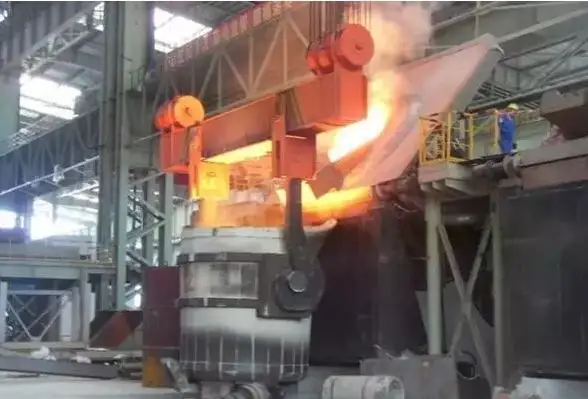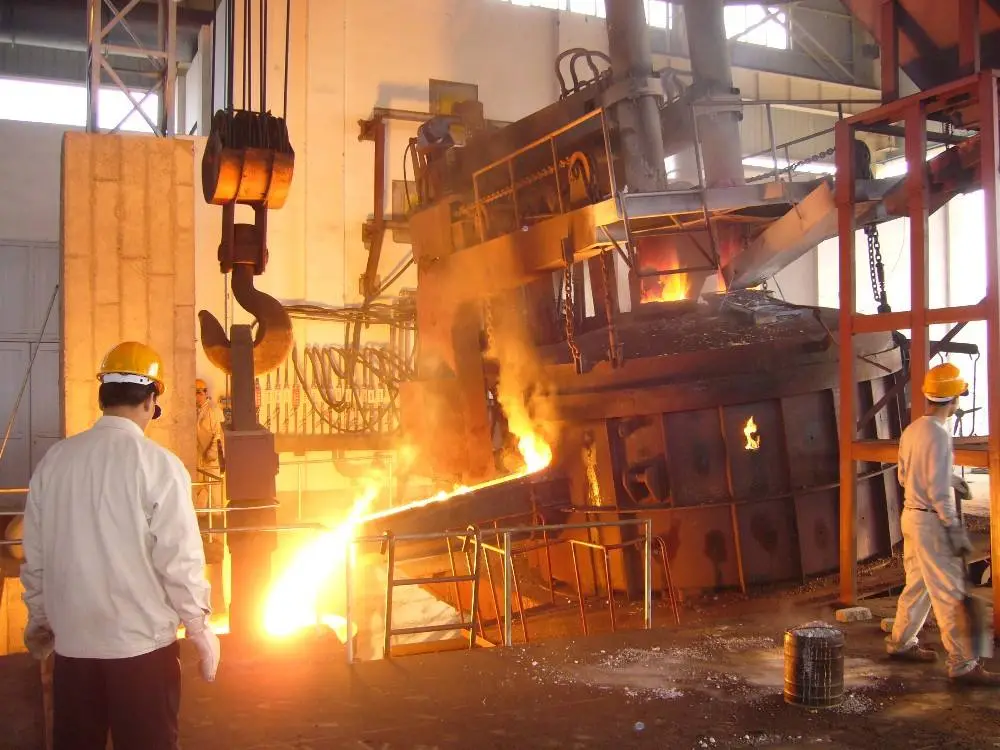The main thermal equipment of the industrial melting furnace includes calcination and sintering furnace, electrolytic tank and smelting furnace. The lining of the firing zone of the rotary kiln is generally built with high-alumina bricks, and clay bricks can be used as the lining for other parts. A layer of refractory fiber felt is laid on the heat insulation layer near the furnace shell, and then a layer of lightweight bricks or lightweight bricks are built. Quality refractory castable pouring.
The shell of the electrolytic cell is made of steel plate, and a layer of insulation board or refractory fiber felt is laid on the inside of the shell, then light bricks are built or light refractory castables are poured, and then clay bricks are built to form a non-working layer, and the electrolytic cell works The layer can only be made of carbon or silicon carbide refractory materials with good electrical conductivity, so as to resist the penetration of molten aluminum and the erosion of fluoride electrolyte. In the past, the working layer of the cell wall of the electrolytic cell was generally built with carbon blocks. In recent years, Japan and some countries in Western Europe have used silicon carbide bricks combined with silicon nitride to build them, and achieved good results.
The working layer at the bottom of the electrolytic cell is generally built of carbon blocks with small joints and filled with carbon paste to prevent the penetration of aluminum solution and enhance conductivity.
The most commonly used aluminum smelting equipment is the reverberatory furnace. The furnace lining in contact with the aluminum solution is generally built with high-alumina bricks with an A1203 content of 80%-85%. When smelting high-purity metal aluminum, mullite bricks or corundum bricks should be used. In some factories, silicon carbide bricks combined with silicon nitride are used for masonry on the parts that are prone to erosion and wear, such as the slope of the hearth and the waste aluminum materials. Self-bonded or silicon nitride-bonded silicon carbide bricks are also used as linings with zircon bricks. For the blockage of the aluminum outlet, the effect of vacuum casting refractory fiber is better. Furnace linings that do not contact aluminum solution are generally built with clay bricks, clay refractory castables or refractory plastics. In order to speed up the melting speed and save energy, lightweight bricks, lightweight refractory castables and refractory fiber products are generally used as heat insulation layers.
Aluminum smelting induction crucible furnace is also commonly used equipment. The lining is generally made of high-alumina refractory castable or refractory ramming material with A1203 content of 70%-80%, and corundum refractory concrete is also used as lining.
The molten aluminum flows out from the aluminum outlet of the furnace through the aluminum flow tank. The tank lining is generally made of silicon carbide bricks, and there are also prefabricated blocks of fused silica sand. If the prefabricated block is used as a tank lining, the surface should be coated with fused silica sand or Use high alumina cement fused silica sand refractory castable as protective layer.
Post time: Feb-28-2023


